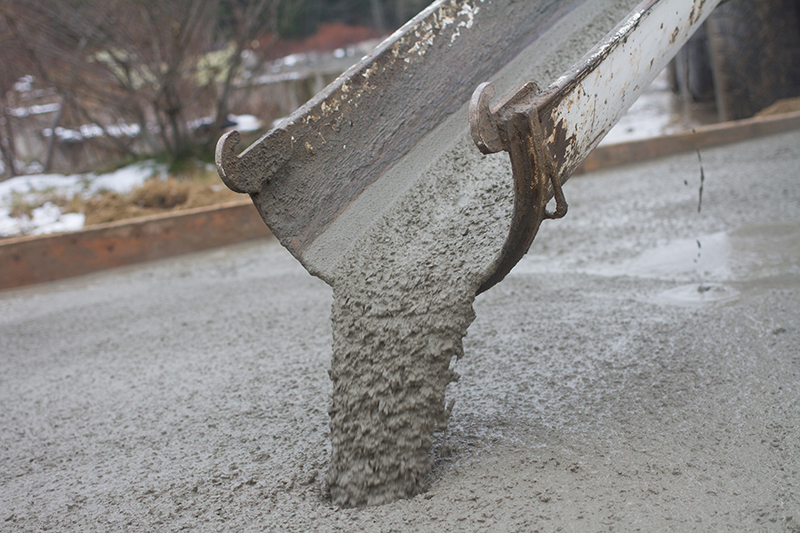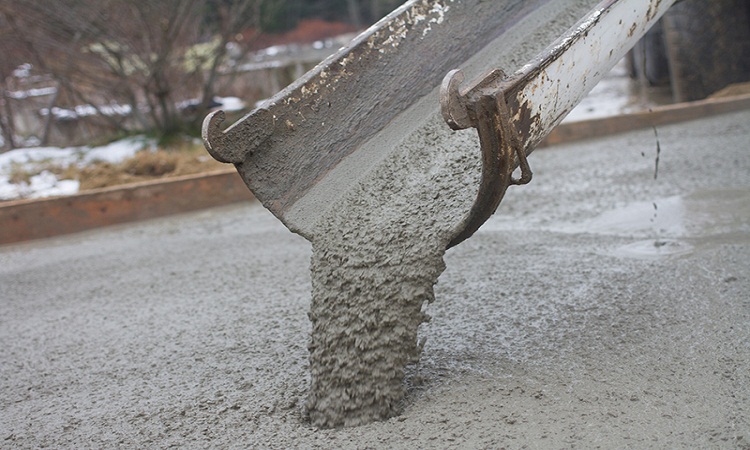The concrete is made with concrete wastes and residual materials from different industries which are eco-friendly so-called “Green Concrete”. The other name of green concrete is resource-saving structures with reduced environmental impact for e.g. Energy saving, CO2 emissions, wastewater, reduce net emissions from manufacturing. Green concrete or environmentally-friendly concrete is a revolutionary topic in the history of the concrete industry. Green concrete was first invented by Dr. WG in Denmark in the year 1998.

Features of Green Concrete
Cement production accounts for more than 6% of all CO2 emissions which is a major factor in world global warming. India is the third-largest cement manufacturer in the world and one of the largest consumers of cement per capita in the world. There have been a number of efforts about reducing the carbon dioxide (CO2) emissions from concrete primarily through the use of lower amounts of cement and higher amounts of supplementary cementitious material such as fly ash, blast furnace slag, etc. Carbon dioxide (CO2) emissions from 1 ton of concrete produced vary between 0.05 to 0.13 tons. 95% of all carbon dioxide (CO2) emissions from a cubic meter of concrete are from cement manufacturing. It is important to reduce CO2 emissions through the greater use of supplementary cementitious material.
Cement
Most of the CO2 in concrete is from the cement manufacturing process. A typical cubic meter (m3) of concrete contains about 10% cement by weight. Out of all ingredients, cement gives out the most carbon dioxide. The reaction in the process of cement production is CaCO3 = CaO + CO2
Aggregate
The use of virgin aggregate contributes about 1% of all carbon dioxide (CO2) emissions from a typical cubic meter (m3) of concrete. Therefore, the use of alternate aggregate is desirable. The use of recycled aggregate and local aggregate is beneficial as it can reduce transportation costs and fuel costs and support sustainable development.
Resources
The growing scarcity of natural sand and aggregate is another aspect the construction industry must consider. While this may not appear to be a priority topic, pressure from conservationists and environmentalists worldwide will continue to encourage both legislators and construction engineers to look for viable alternatives to natural resources. The use of recycled materials like water, aggregate, recycled steel is some ingredients that should be encouraged since fresh resources are becoming increasingly scarce.
Materials for Green Concrete
Green construction materials are consisting of renewable, rather than non-renewable resources. Green materials are environmentally responsible (eco-friendly) because effects are considered over the life of the product.
Depending upon the special goals and project, green materials may involve an assessment of one or more of the following criteria.
Locally Available
All construction materials, systems, and components are found locally, saving energy and resources in transportation to the project site.
Salvaged, Re-furnished, or Re-manufactured
It includes saving material from disposal & modernizes, repairing, restoring, or generally enhancing the appearance, performance, quality, functionality, or value of a product.
Reusable or Recyclable
Select materials that can be easily disassembled and reused at the end of their useful life.
Recycled materials which are the industry has established to perform positively as a replacement for conventional materials include: fly ash, ground granulated blast furnace slag (GGBS), recycled concrete, demolition waste, microsilica, etc. production and use of recycled materials differ from place to place and from time to time depending on the location (region) and construction activity as well as the type of construction projects at a given site.
Following materials are considered as green concrete material and are discussed below:
- Recycled Demolition Waste Aggregate
- Recycled Concrete Aggregate
- Blast Furnace Slag
- Manufactured Sand
- Glass Aggregate
- Fly Ash
They are divided into cement, cementitious material, coarse and fine aggregate. Their definitions are as usual.
Environmental Benefits of using Green Concrete
Geopolymer concrete (Green Concrete) is part of a process to create construction materials that have a reduced impact on the environment. It is produced from a combination of an inorganic polymer and 25% to 100 % industrial waste. The list of 4 benefits to using green concrete for your next project is explained below:
Last Longer
Green concrete obtain strength faster and has a lower shrinkage rate than concrete made only from Portland cement. Structures built by using green concrete have a better chance of surviving or resisting fire. It also has more resistance to corrosive effect which is important with the effects pollution has had on the environment. All of those parameters add to a building during execution that will last much longer than one made with ordinary concrete.
Similarly, green concrete or eco-friendly concrete mixtures have been found in ancient Roman Structures & this material was also used in Ukraine in the 1950s and 1960s. More than 40 years later those Ukrainian buildings are still standing. If buildings don’t continuously have to be rebuilt, some construction materials are needed and the impact on the environment during the process of making those materials is reduced.
Uses Industrial Waste
For an alternative, instead of a 100% Ordinary Portland Cement (OPC) mixture, green concrete uses anywhere from 25% to 100% fly ash. Fly ash is a result of coal combustion and is collected from the chimneys of industrial plants that use coal as a power source. There are extensive amounts of this industrial waste product available. Thousands of acres of land are used for the disposal of fly ash. The increase in the use of green concrete in building construction (construction industry) will provide a way to use up fly ash and hopefully free thousands of acres of land.
Reduces Energy Consumption
If you use less Ordinary Portland Cement (OPC) and more fly ash when mixing concrete, then you will use less energy. The materials that are used in Ordinary Portland Cement (OPC) require huge amounts of coal or natural gas to heat it up to the appropriate temperature to turn them into Portland cement.
It reduces energy utilization is that a building constructed from it is more resistant to temperature changes. An architect can use this and design a green concrete building or eco-friendly concrete building to use energy for heating and cooling more efficiently.
Reduces CO2 Emissions
In order to make Portland cement one of the main ingredients in ordinary cement pulverized limestone, clay, and sand are heated to 1450o C using natural gas or coal as a fuel. This process is responsible for 5 to 8 percent of all CO2 emissions worldwide. The manufacturing of green concrete releases has up to 80% fewer carbon dioxide (CO2) emissions. As a part of a global effort to reduce carbon dioxide (CO2) emissions, switching over completely to using green concrete or eco-friendly concrete for construction will help considerably.

